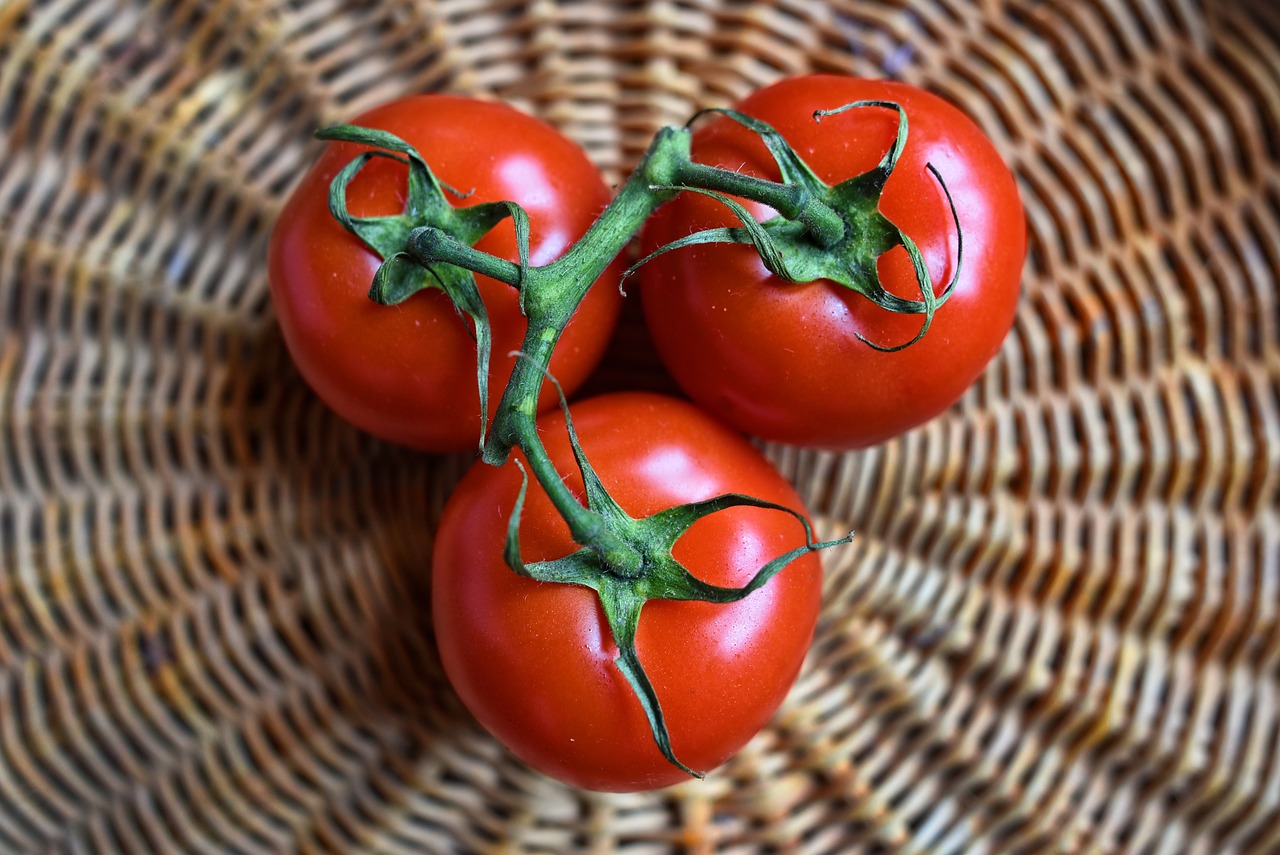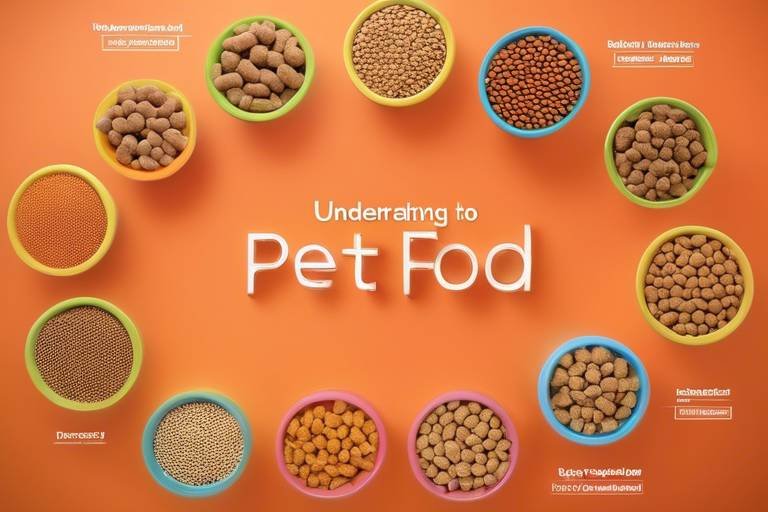Understanding the Different Types of Pet Food
When it comes to our furry friends, choosing the right pet food can feel like navigating a maze. With so many options out there, how do you know which one is best for your pet? This article explores the various types of pet food available, their nutritional values, and how to choose the best option for your furry friends to ensure their health and well-being. Understanding the different types of pet food is crucial, as it directly impacts your pet's overall health, energy levels, and happiness. From dry kibble to raw diets, each type has its unique benefits and considerations, making it essential for pet owners to be well-informed.
Dry kibble is a popular choice among pet owners due to its convenience and affordability. It's easy to store, doesn't spoil quickly, and is often more economical than other options. But what does this crunchy food offer nutritionally? Most high-quality dry kibbles are formulated to provide a balanced diet, containing essential proteins, fats, vitamins, and minerals. When selecting kibble, look for brands that list real meat as the first ingredient and avoid those laden with fillers like corn and soy. A good rule of thumb is to check for the AAFCO (Association of American Feed Control Officials) statement on the packaging, which indicates that the food meets basic nutritional standards.
Canned wet food offers moisture and flavor that many pets enjoy. It's often more palatable than dry kibble, making it an excellent option for picky eaters. Additionally, the higher moisture content can help keep your pet hydrated, especially if they don't drink enough water. However, it’s essential to be aware of potential drawbacks, such as higher calorie counts and the need for refrigeration after opening. Incorporating wet food into your pet's diet can be as simple as mixing it with kibble or serving it as a standalone meal. Just remember to monitor portion sizes to maintain a healthy weight.
Raw diets have gained popularity among pet owners seeking a more natural feeding approach. Advocates argue that feeding pets raw meat, bones, and vegetables mimics their ancestral diets, promoting better health and vitality. However, this method isn't without its challenges. While raw diets can provide excellent nutritional benefits, such as improved coat condition and dental health, they also come with safety concerns, such as the risk of bacterial contamination. It's crucial to do thorough research and consult with a veterinarian before embarking on a raw feeding journey to ensure your pet's safety and nutritional needs are met.
Homemade pet food allows owners to have complete control over ingredients. This can be a rewarding experience, as you know exactly what your pet is consuming. However, it's vital to ensure that the meals are nutritionally balanced. Cooking for your pet doesn’t mean throwing together scraps from your dinner plate; it requires careful planning. Consider working with a veterinarian or a pet nutritionist to develop balanced recipes that meet your pet's dietary needs. Remember, just like with humans, not all foods are safe for pets. Some common ingredients, like onions and chocolate, can be toxic!
Grain-free pet food has become a trend, especially for pets with sensitivities. Many pet owners have turned to grain-free diets, believing they can help alleviate allergies or digestive issues. However, it's essential to understand that not all pets require grain-free options. Some pets thrive on grains, while others may benefit from avoiding them. When considering grain-free pet food, look for high-quality protein sources and ensure that the food is well-balanced. Always consult with your veterinarian to determine if a grain-free diet is appropriate for your furry friend.
Specialty diets cater to specific health needs, such as allergies or weight management. If your pet has been diagnosed with a particular condition, it’s essential to consider a diet tailored to their needs. Specialty diets can include low-fat options, hypoallergenic formulas, or those designed for senior pets. Identifying if your pet requires a specialty diet may involve observing their behavior, coat health, and overall vitality. A chat with your veterinarian can help clarify if your pet's health requires a specific dietary approach.
Pets have different nutritional needs at various life stages. Puppy, adult, and senior formulas are specially designed to provide the right balance of nutrients for each stage of your pet's life. Puppies require more protein and calories for growth, while senior pets may need diets lower in calories and higher in fiber to support their aging bodies. Understanding these differences is crucial for ensuring optimal health throughout your pet's life. Always pay attention to your pet's life stage when choosing food, as it can significantly affect their well-being.
Pet food labels can be confusing. With various terms and claims, it’s easy to feel overwhelmed. However, understanding how to read and interpret these labels is essential for making informed decisions. Look for ingredient lists that start with real meat, and pay attention to nutritional adequacy statements, which indicate whether the food meets established standards. Familiarizing yourself with common marketing terms, such as "natural," "holistic," and "grain-free," can also help you discern the quality of the food you're considering for your pet.
Consulting a veterinarian is crucial in determining the best diet for your pet. Your vet can provide personalized advice based on your pet's health history, lifestyle, and specific needs. They can help you navigate the myriad of options available and guide you toward the most suitable choices for your furry friend. Remember, your pet's diet is a significant aspect of their overall health, so don’t hesitate to seek professional guidance!
- What is the best type of food for my pet? The best food depends on your pet's age, health, and preferences. Consult your veterinarian for tailored advice.
- Can I mix different types of food? Yes, many pet owners mix kibble with wet food or add homemade meals. Just ensure the overall diet is balanced.
- Are grain-free diets necessary? Not all pets need grain-free diets. Consult your vet to determine if it's suitable for your pet.
- How do I know if my pet is allergic to their food? Symptoms like itching, digestive issues, or ear infections may indicate food allergies. Consult a vet for testing and dietary recommendations.

Dry Kibble
is a popular choice among pet owners, and it's easy to see why. Not only is it convenient and affordable, but it also packs a punch when it comes to nutritional value. Imagine being able to scoop out a bowl of food, knowing that your furry friend is getting the right balance of nutrients to thrive. Kibble is designed to be a complete diet, often fortified with vitamins and minerals that are essential for your pet's health.
One of the significant advantages of dry kibble is its long shelf life. Unlike wet food, which can spoil quickly once opened, kibble can be stored for months without losing its nutritional integrity. This makes it an excellent option for busy pet owners who may not have time to prepare fresh meals daily. Plus, it’s easy to measure out portions, ensuring your pet gets the right amount of food without the hassle.
When selecting high-quality kibble, it's crucial to read the ingredient list carefully. Look for products that list a specific meat source as the first ingredient, such as chicken, beef, or fish. Avoid brands that rely heavily on fillers like corn or soy, as these do not provide the nutrition your pet needs. A good rule of thumb is to choose kibble that contains a mix of animal proteins, healthy fats, and vegetables to support overall health.
Another important factor to consider is the size of the kibble. Smaller pieces are often better for smaller breeds, while larger kibble can help promote dental health in larger dogs by reducing plaque buildup. Additionally, consider your pet’s age and activity level when choosing kibble. Puppies need a higher protein content for growth, while senior pets may benefit from formulas designed for weight management and joint support.
In conclusion, dry kibble can be an excellent choice for pet owners looking for a convenient, nutritious, and cost-effective feeding option. By selecting high-quality products and paying attention to your pet's specific needs, you can ensure that your furry friend enjoys a balanced diet that supports their health and well-being.
- How much dry kibble should I feed my pet? - The amount varies by pet size, age, and activity level. Always refer to the feeding guidelines on the kibble packaging and consult your veterinarian for personalized advice.
- Can I mix dry kibble with wet food? - Yes, many pet owners choose to mix dry kibble with wet food for added flavor and moisture. Just ensure that the combined portions still meet your pet's nutritional needs.
- Is dry kibble safe for all pets? - Most pets can safely eat dry kibble, but some pets with specific dental issues or health conditions might require a different diet. Always consult your veterinarian if you have concerns.

Canned Wet Food
Canned wet food is like a gourmet meal for your furry friends, offering a delicious and moist alternative to dry kibble. Many pet owners find that their pets absolutely devour canned food, often preferring it due to its rich flavors and softer texture. But it’s not just about taste; there are several nutritional benefits that make canned wet food a worthy contender in the pet food aisle.
One of the standout features of canned wet food is its high moisture content, which can be particularly beneficial for pets that may not drink enough water throughout the day. Just like humans, pets need to stay hydrated, and wet food can help with that. For instance, if you're worried about your cat's hydration, switching to a wet food diet can be a game-changer. It’s like adding a splash of water to their meals, ensuring they stay hydrated and healthy.
Now, while the benefits are numerous, it’s essential to consider some potential drawbacks. Canned wet food can be more expensive than dry kibble, which might not fit into everyone's budget. Additionally, once opened, it needs to be refrigerated and consumed within a few days to prevent spoilage. That said, many pet owners find that the benefits outweigh the costs, especially when they see their pets thriving on a wet food diet.
When selecting canned wet food for your pet, keep an eye out for a few key factors:
- Quality Ingredients: Look for foods that list real meat as the first ingredient, rather than by-products or fillers.
- Balanced Nutrition: Ensure the food meets the nutritional guidelines set by the Association of American Feed Control Officials (AAFCO).
- Flavor Variety: Pets can be picky, so having a variety of flavors can help keep mealtime exciting.
Incorporating canned wet food into your pet's diet can be done in several ways. You might choose to serve it as a standalone meal or mix it with dry kibble to add some moisture and flavor. You could even use it as a tasty topper for dry food, transforming an ordinary meal into something special. Just remember to transition gradually to avoid upsetting your pet's stomach.
In conclusion, canned wet food can be a fantastic addition to your pet's diet, providing moisture, flavor, and essential nutrients. As always, it's crucial to monitor your pet's reaction to any new food and consult with a veterinarian if you have any concerns. After all, you want to ensure that your furry friend is not just eating well but also living well.
1. Is canned wet food better than dry kibble?
While both have their benefits, canned wet food offers higher moisture content and is often more palatable for pets. It’s essential to choose the right food based on your pet’s individual needs.
2. How much canned food should I feed my pet?
The amount of canned food depends on your pet's size, age, and activity level. Always refer to the feeding guidelines on the can and adjust based on your pet's weight and health.
3. Can I mix wet and dry food?
Absolutely! Many pet owners mix wet and dry food to provide a balanced diet that offers both texture and flavor.
4. How should I store opened cans of wet food?
Once opened, canned wet food should be refrigerated and consumed within 3-5 days to maintain freshness and prevent spoilage.

Raw Diets
Raw diets have become a hot topic among pet owners who are looking for a more natural approach to feeding their furry companions. But what exactly does a raw diet entail? Essentially, it consists of feeding pets uncooked meat, bones, fruits, and vegetables. This method mimics what wild animals would consume in their natural habitats, promoting a more instinctual way of eating. The allure of raw feeding lies in the belief that it can lead to improved health, shinier coats, and higher energy levels. However, it's crucial to weigh the pros and cons before making the switch.
One of the primary benefits of a raw diet is the nutritional value it offers. Raw foods are packed with essential nutrients, including proteins, vitamins, and minerals that are often lost during the cooking process. For example, raw meat is a great source of high-quality protein, which is vital for muscle development and overall health. Additionally, raw diets can help maintain a healthy weight, as they typically contain fewer carbohydrates and fillers compared to commercial pet foods.
However, there are also potential drawbacks that pet owners should consider. One major concern is the risk of bacterial contamination. Raw meat can harbor harmful bacteria like Salmonella and E. coli, which can pose serious health risks to both pets and humans. It's essential to handle raw ingredients carefully and ensure proper hygiene when preparing meals. Furthermore, a poorly balanced raw diet can lead to nutritional deficiencies. Without careful planning, pet owners might overlook essential nutrients, leading to health issues down the line.
When considering a raw diet, it's vital to consult with a veterinarian or a pet nutritionist. They can help you design a balanced meal plan tailored to your pet's specific needs. It's also important to gradually transition your pet to a raw diet to avoid digestive upset. Start by mixing small amounts of raw food with their current diet and slowly increase the proportion over time.
In summary, raw diets can offer numerous benefits for your pet, but they also come with risks that shouldn't be ignored. If you're intrigued by this feeding method, take the time to research thoroughly and seek professional advice. After all, the goal is to provide your furry friend with the best possible nutrition while keeping their health and safety in mind.
- Is a raw diet suitable for all pets? - While many pets can thrive on a raw diet, it's not suitable for every animal. Consult your vet to determine if it's a good fit for your pet.
- How do I ensure my raw diet is balanced? - Work with a veterinarian or pet nutritionist to create a meal plan that meets all of your pet's nutritional needs.
- What are the signs that my pet is thriving on a raw diet? - Look for improvements in coat condition, energy levels, and overall health. Regular vet check-ups can help monitor their progress.

This article explores the various types of pet food available, their nutritional values, and how to choose the best option for your furry friends to ensure their health and well-being.
Dry kibble is a popular choice among pet owners due to its convenience and affordability. One of the significant nutritional benefits of kibble is that it is designed to provide a balanced diet for pets, often containing essential proteins, fats, vitamins, and minerals. The crunchy texture of kibble also helps in maintaining dental health by reducing plaque buildup. When selecting high-quality kibble for your pet, look for products that list meat as the first ingredient and avoid those with excessive fillers like corn and soy. Additionally, consider the size of the kibble pieces to ensure they are suitable for your pet's breed and size.
Canned wet food offers moisture and flavor that many pets enjoy, making it an excellent option for picky eaters or pets that need extra hydration. The high moisture content in wet food can be particularly beneficial for pets who do not drink enough water. However, it’s essential to be mindful of potential drawbacks, such as higher calorie content and the need for refrigeration after opening. To effectively incorporate wet food into your pet's diet, consider mixing it with dry kibble to provide a varied texture and enhance palatability.
Raw diets have gained popularity among pet owners seeking a more natural feeding approach. Advocates of raw feeding argue that it mirrors the diet of wild ancestors, potentially leading to better health outcomes. Nutritional benefits may include improved coat condition, increased energy levels, and better digestion. However, there are safety concerns, including the risk of bacterial contamination and an unbalanced diet if not properly formulated. If you’re considering a raw diet, consult with a veterinarian to ensure it meets your pet’s nutritional needs.
Homemade pet food allows owners to have complete control over ingredients, which can be incredibly rewarding. When preparing meals for your pet, it’s crucial to ensure a balanced diet that includes proteins, carbohydrates, and fats. Simple recipes such as chicken and rice or beef and vegetables can be nutritious, but always check with a vet or a pet nutritionist to avoid common pitfalls like nutrient deficiencies. Remember, just because it’s homemade doesn’t mean it’s automatically healthy!
Grain-free pet food has become a trend, especially for pets with sensitivities or allergies. Many pet owners are turning to grain-free options to address digestive issues or skin problems. However, it’s essential to understand that not all pets need a grain-free diet. When choosing the right grain-free food, look for high-quality protein sources and avoid products that substitute grains with excessive fillers like peas and potatoes, which can lead to other health issues.
Specialty diets cater to specific health needs, such as allergies, weight management, or kidney health. These diets are formulated to address particular conditions and can significantly improve your pet's quality of life. If you suspect your pet has special dietary needs, look for signs like excessive itching or weight gain. Consulting with your veterinarian can help determine if a specialty diet is necessary and which one would be the best fit for your furry friend.
Life stage nutrition is crucial because pets have different nutritional needs at various life stages. For instance, puppies require more calories and protein for growth, while senior pets may need fewer calories and more fiber for digestive health. Understanding these differences can help you choose the right food for your pet, whether they are a sprightly puppy, a playful adult, or a wise old companion. Always look for formulas specifically designed for your pet’s life stage to ensure optimal health throughout their life.
Pet food labels can be confusing, but they are essential for making informed choices. When reading labels, pay attention to the ingredient list, nutritional adequacy statements, and any claims made by the manufacturer. For example, terms like “complete and balanced” indicate that the food meets the nutritional standards set by the Association of American Feed Control Officials (AAFCO). Familiarizing yourself with these labels can empower you to choose the best food for your pet.
Consulting a veterinarian is crucial in determining the best diet for your pet. Every pet is unique, with individual health needs and lifestyle considerations. A veterinarian can provide valuable insights and recommendations based on your pet’s age, breed, health status, and activity level. Don’t hesitate to seek professional guidance to ensure you’re making the best dietary choices for your furry friend.
- What is the best type of pet food? The best type of pet food depends on your pet's individual needs, including age, health conditions, and preferences.
- Can I mix different types of pet food? Yes, mixing different types can provide variety, but ensure that the overall diet remains balanced.
- How do I transition my pet to a new diet? Gradually introduce the new food over a week, mixing it with the old food to avoid digestive upset.
- Is homemade pet food better than commercial options? Homemade food can be healthier if properly balanced, but it requires careful planning and consultation with a vet.

